International
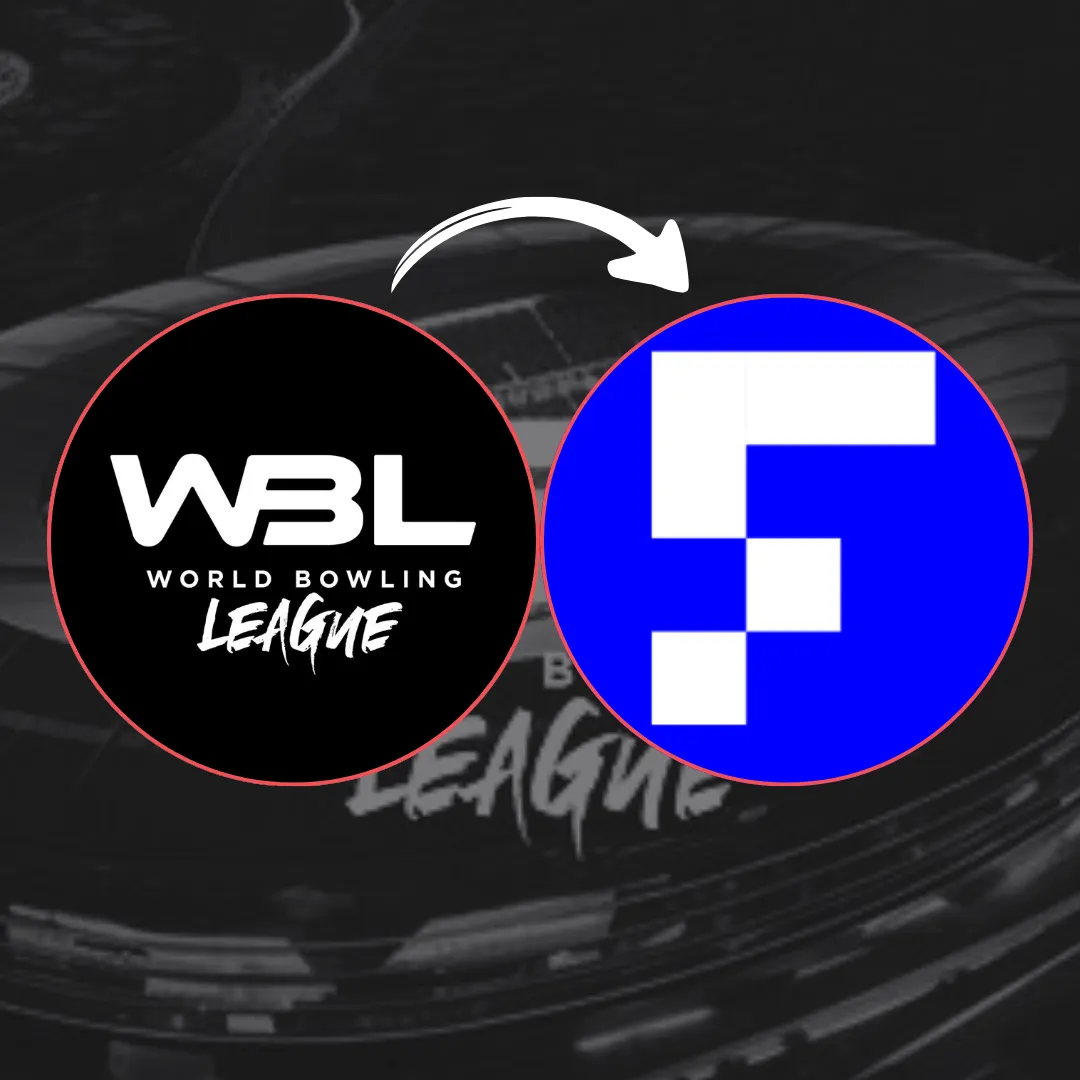
World Bowling League Instagram Account Rebrands as FSPGames
The World Bowling League Instagram account has changed its name to FSPGames.Account also changed the logo. Along with the rebrand, the account’s latest post announced that League SportsCo, with support from World Squash Federation Limited and the PSA Squash Tour,is introducing World Premier Squash. latest post According to the post, the new project aims to bring the world’s top squashplayers to iconic locations around the globe in a team-based competitionsupported by technology and storytelling. The concept closely mirrors ideas previously associated with the World BowlingLeague project. At the time of publishing, no public explanation has been provided regardingthe Instagram name change or the move away from bowling-related content. The World Bowling League was introduced to bowling in late 2023 during the IBFCongress as a new bowling venture built around innovative formats, large-scaleevents, and significant financial incentives for athletes. We covered the initial announcement, including LTC’s background and thekey terms of the agreement with the IBF, in an article published inOctober 2023. We covered the initial announcement, including LTC’s background and thekey terms of the agreement with the IBF, in an article published inOctober 2023 . During its early promotion, several high-profile sports figures were publiclylinked to the project, including MLB starMookie Bettsand cricket icon Virat Kohli. Mookie Betts In aninterview with Reutersin June, League Sports Co founder and CEO Adi K Mishra stated that the WorldBowling League was scheduledto launch in the first quarter of 2026 with six international franchises. interview with Reuters to launch in the first quarter of 2026 with six international franchises Since that announcement, however, no further public updates about the bowlingproject have been released.
International
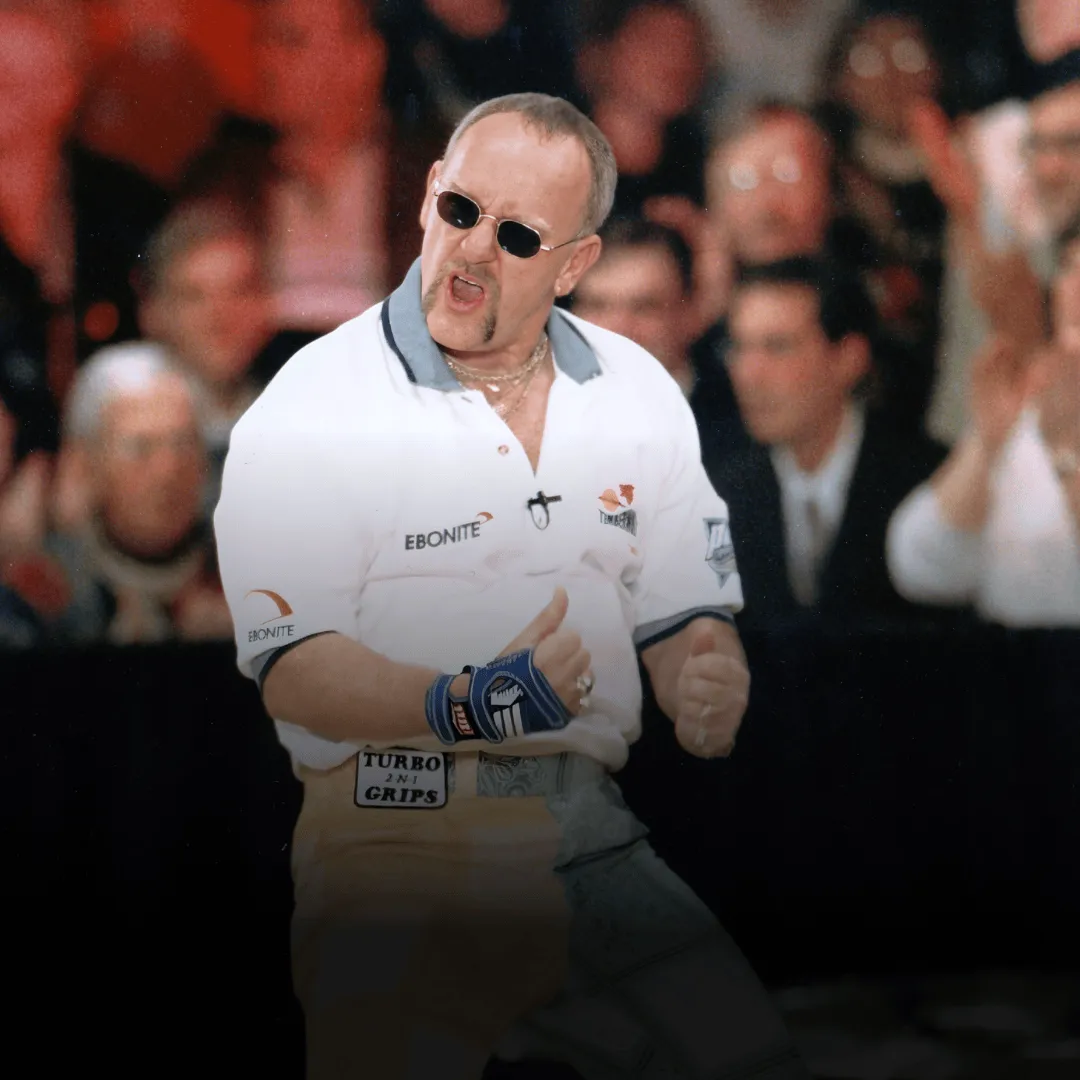
Guppy Troup Will Be Inducted into the PBA Hall of Fame
John Douglas "Guppy" Troup has been elected to the PBA Hall of Fame and willbe inducted as the sole member of the Class of 2026. Troup was selected through the PBA Hall of Fame Veterans Committee, whichrecognizes players whose careers made a lasting impact on professionalbowling. He received the most votes from living Hall of Famers among the candidates onthis year’s ballot. Guppy Troup was known for his flashy style, and his career on the PBA Tour wasjust as eye-catching. Born in Edinburgh, Scotland, Troup moved with his family to South Carolina in1953, at the age of three. Shortly after that he started bowling, became amember of the team "The Guppies" with which he won the state title and set ajunior state record. The team’s name soon became his lifelong nickname. Guppy Troup became a PBA member in 1975 and began competing on the PBA Tourthe following season. His breakthrough came in 1978 when he won his first PBA Tour title at theKessler Open. During his career, Guppy Troup won eight PBA Tour titles. His most successfulstretch came between 1980 and 1985, when he collected seven tour titles,including three victories in the 1982 season. His final PBA Tour title came atthe 1985 Austin Open in Austin, Texas. Guppy Troup also built one of the most accomplished resumes in PBA RegionalTour history. He earned 42 regional titles, placing him ninth inall-time PBA Regional Tour champions list. all-time PBA Regional Tour champions list Troup also competed on the PBA50 Tour, where he was named Rookie of the Yearin 2000. The official induction ceremony will take place on February 21, 2026, inArlington, Texas. Guppy Troup's PBA Tour Titles 1978 Kessler Open – Battle Creek, Michigan1980 Waukegan Super Touch Open – Waukegan, Illinois1982 Miller High Life Classic – Anaheim, California1982 Molson Bowling Challenge – Windsor, Ontario, Canada1982 Northern Ohio Open – Fairview Park, Ohio1983 Quaker State Open – Grand Prairie, Texas1984 Budweiser Classic – Columbus, Ohio1985 Austin Open – Austin, Texas 1978 Kessler Open – Battle Creek, Michigan 1980 Waukegan Super Touch Open – Waukegan, Illinois 1982 Miller High Life Classic – Anaheim, California 1982 Molson Bowling Challenge – Windsor, Ontario, Canada 1982 Northern Ohio Open – Fairview Park, Ohio 1983 Quaker State Open – Grand Prairie, Texas 1984 Budweiser Classic – Columbus, Ohio 1985 Austin Open – Austin, Texas
International
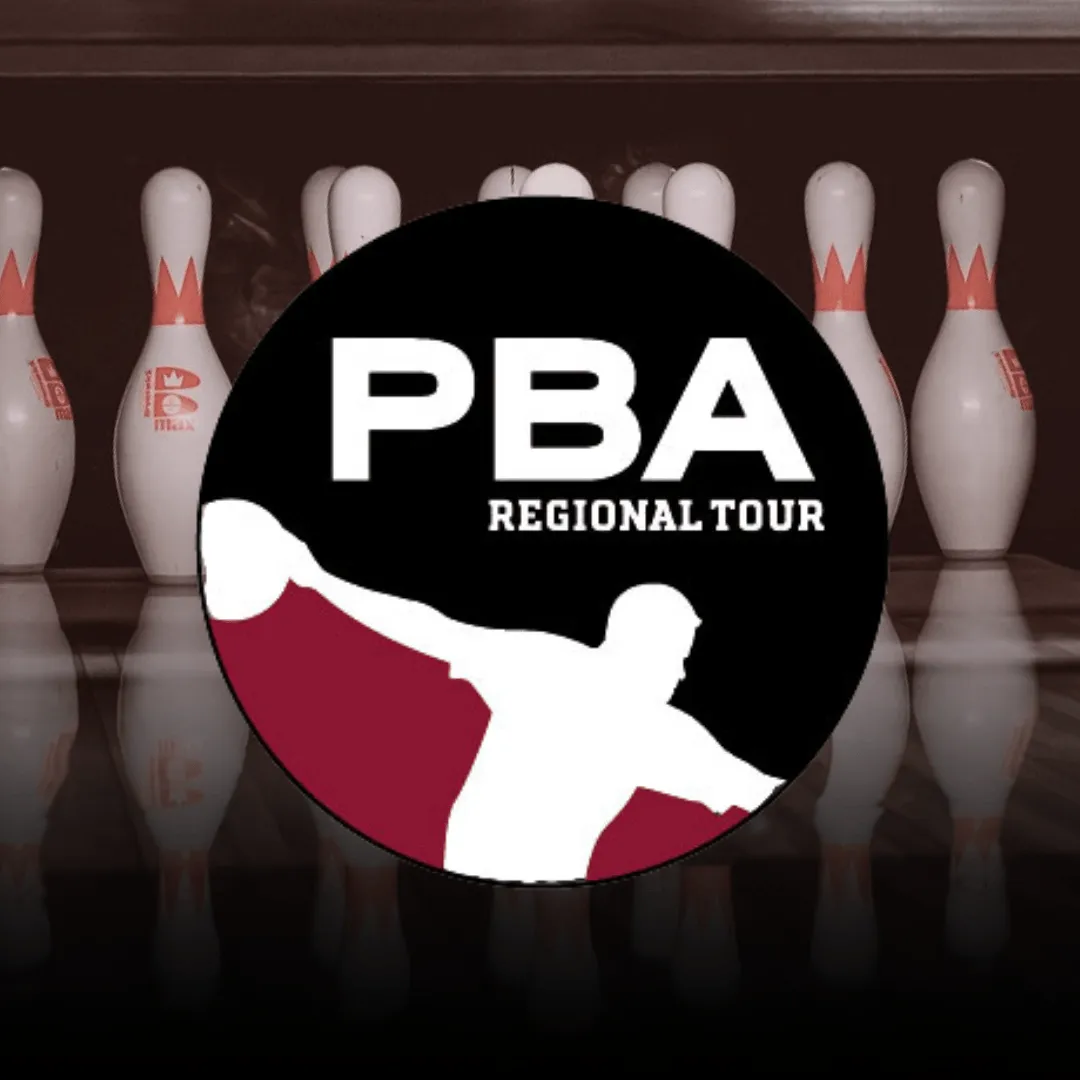
PBA Regional Finals Underway at National Bowling Stadium in Reno
The PBA Regionals Finals are currently taking place at the National BowlingStadium in Reno, Nevada, where top performers from the 2025 PBA Regional Tourseason have gathered for the BowlTV PBA Regional Players Invitational. The event includes competition in both the PBA and PBA50 divisions and bringstogether players from across the United States and several internationalregions. The tournament is awarding one champion in each division. One champion will be decided in each division. The PBA Regionals combinedprize fund is $125,000 across both PBA and PBA50 fields. The winner of the PBA division will earn $15,000, while the PBA50 championwill receive $10,000. In addition, winners in both divisions will secureautomatic entry into their respective 2026 PBA Tournament of Champions fields. The PBA Regionals Finals qualifying began on Friday, with multiple roundsscheduled throughout the day and both divisions competing at the same time. After three rounds of qualifying, the top 24 players in the PBA division andthe top 12 players in the PBA50 division will advance to match play. Match play is taking place on Saturday, beginning in the afternoon andcontinuing into the evening, with additional rounds scheduled in the PBAdivision later in the day. The final day of the PBA Regionals Finals is setfor Sunday, starting with the Round of 8, followed by the semifinals and thechampionship matches. All qualifying rounds and match play from the PBA Regionals Finals are beingstreamed live on BowlTV. International representation is also part of the field at the PBA RegionalsFinals. From Sweden, Joachim Karlsson and Oskar Broström qualified to compete.Japan is represented by Yuta Saito and Toshihiro Sakuraba. The China regionincludes Otto Leung of Hong Kong and Shu-Kuo Yang of Taiwan. One player fromeach of these regions qualified in both the PBA and PBA50 divisions. PBA Regionals Finals Schedule (all times local) Thursday, December 11 Friday, December 12 Saturday, December 13 Sunday, December 14 • Round of 8 match play, best of five, starting at 9:00 a.m.• Round of 4 match play, best of three, starting at 11:30 a.m.• Championship match, single game, starting at 1:00 p.m.
International
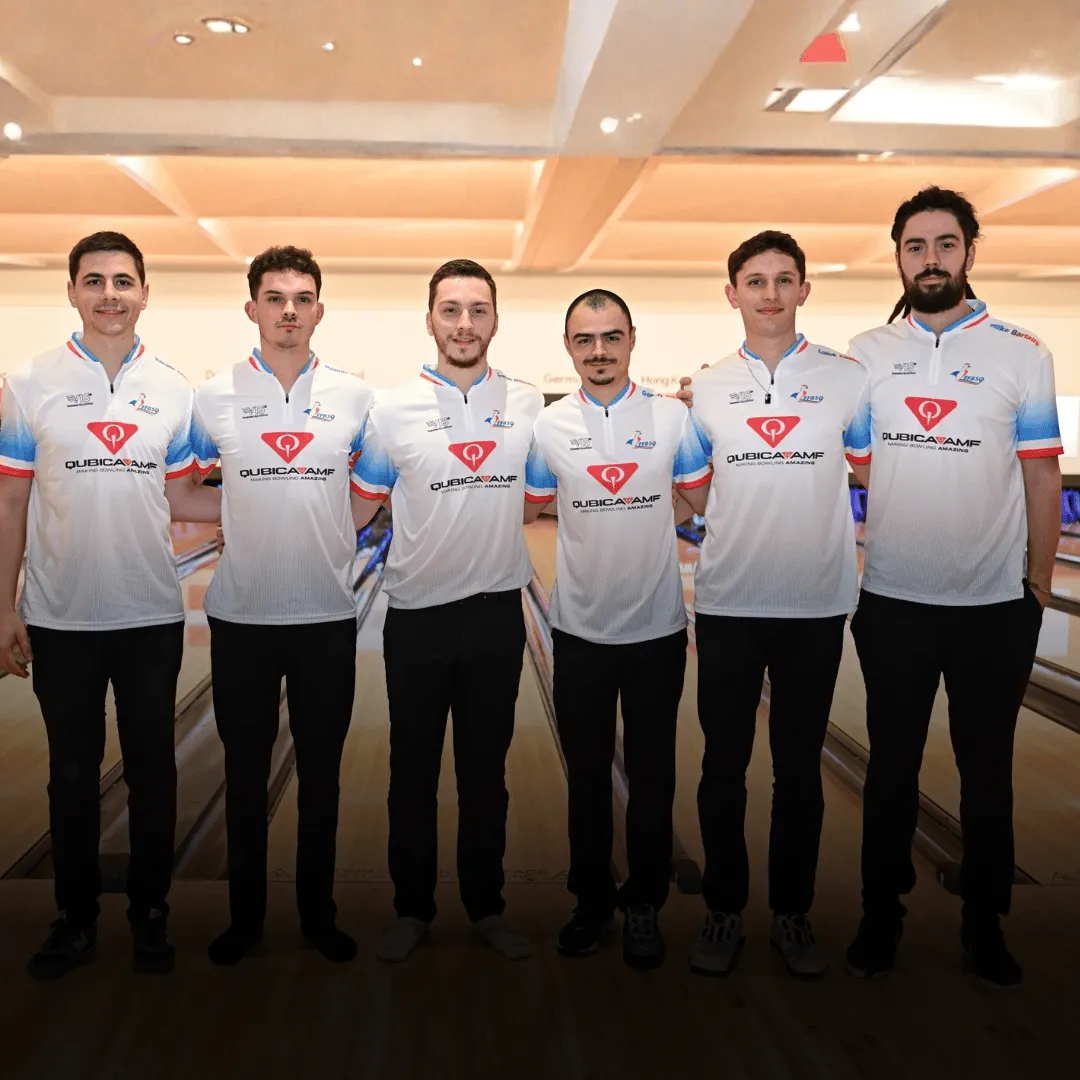
USA and France Win Team Gold at IBF World Championships 2025
The final day of the IBF World Championships 2025 delivered a strong finish,with the Women’s and Men’s Team of Five titles decided in arena finals. After a long journey through qualification, Round 2 match play, andhigh-pressure semifinals, the United States took gold in the women’s division,while France secured the men’s team title. Women's Team Event Malaysia earned the first spot in the final after defeating Japan 2–0, rolling204–177 and 198–145 in a steady and controlled semifinal performance. In the second match, the United States overcame Korea in a close best-of-threeseries. Korea opened with a 257–234 win, but Team USA responded strongly,taking the next two games 221–151 and 212–160 to advance. The championship match between Malaysia and the United States developed into atight three-game contest. Malaysia struck first with a 191–179 victory, butthe United States answered. Games two and three shifted in their favor with scores of 200–159 and 199–185,securing the 2025 women’s team gold medal. Women’s Team Medalists Gold – United States Silver – Malaysia Bronze – Japan and Korea Men's Team Event France clinched their place in the title match after beating Germany 2–1.Germany opened with a narrow win, 227–200, but France recovered quickly,taking the next two games 191–180 and 236–231 to advance. In the second semifinal, Sweden defeated Korea 2–1 in another close battle.Korea claimed game one 211–194, but Sweden controlled the remainder of thematch with wins of 257–228 and 202–186. Sweden and France met for the men's team gold, with France delivering anoutstanding performance. Sweden kept games close, but France held the momentumand closed the match in two straight games, taking the title with a 2–0 sweep(248–264, 228–257). Men’s Team Medalists Gold – France Silver – Sweden Bronze – Germany and Korea All results from the IBF World Championships 2025 are available attournaments.bowlinglife.eu. tournaments.bowlinglife.eu Overall Medal Tally Overview With all Singles, Doubles, Trios, and Team events completed, we can take acloser picture to the medal tally of the IBF World Championships 2025. Finland stands at the top of the table with four gold medals and one silver,driven largely by dominant performance of Essi Pakarinen. Sweden follows with one gold, one silver, and two bronze medals, while theUnited States completes the top three, collecting one gold and three bronzes,highlighted by their victory in the Women’s Team event. This table reflects only medals earned in Singles, Doubles, Trios, and Teamdisciplines. All-Events and Federation awards will be added separately onceofficially confirmed. Below is the full breakdown of all federations that reached the podium duringthe championship: 1. Finland – 4 Gold, 1 Silver, 0 Bronze 2. Romania – 1 Gold, 0 Silver, 0 Bronze 3. France – 1 Gold, 0 Silver, 0 Bronze 4. Sweden – 1 Gold, 1 Silver, 2 Bronze 5. United States – 1 Gold, 0 Silver, 3 Bronze 6. Malaysia – 0 Gold, 2 Silver, 1 Bronze 7. Singapore – 0 Gold, 1 Silver, 2 Bronze 8. Denmark – 0 Gold, 1 Silver, 1 Bronze 9. Japan – 0 Gold, 1 Silver, 1 Bronze 10. Germany – 0 Gold, 1 Silver, 1 Bronze 11. Korea – 0 Gold, 0 Silver, 3 Bronze 12. Czech Republic – 0 Gold, 0 Silver, 1 Bronze 13. Australia – 0 Gold, 0 Silver, 1 Bronze
International

Finland and Sweden Claim Trios Gold at IBF World Championships 2025
The arena rounds began with high drama at Queen Elizabeth Stadium in Wan Chai,where both the women’s and men’s trios titles were decided after a full day oftightly contested semifinals and finals. Finland continued its impressive run in Hong Kong by winning the women’sevent, while Sweden delivered a strong performance to claim the men’s gold. Women's Trios The women’s semifinals opened the session, with Finland’s trio of PeppiKonsteri, Essi Pakarinen, and Ani Juntunen defeating Denmark 2–0. They postedsteady games of 215-185 and 235-202 to secure their place in the final, whileDenmark settled for bronze. On the other side of the bracket, Japan overcame Sweden 2–0, winning withgames of 199-164 and 205-188. Sweden’s run ended in the semifinal round with abronze medal. The final between Finland and Japan stretched to three games. Japan struckfirst, taking the opener 179–162, but Finland responded with two strongfinishes — 241–171 and 190–158 - to close out the match 2–1 and secure thegold medal. This victory marked a significant moment for Finland. The country had nevercollected more than three gold medals at a single IBF World Championships, andthis win set a new national record. It also added to Essi Pakarinen’s outstanding week, as she secured theAll-Events gold, bringing her total to four gold medals across all events shehas entered. Women’s Trios Medalists Gold – Finland Silver – Japan Bronze – Sweden and Denmark Men's Trios In the men’s semifinals, Sweden advanced with a 2–0 victory over Korea afterposting 244-243 and 270-245. Korea earned bronze for their performance.Denmark also reached the final after defeating Australia 2–1 (212-213,194-174, 238-218), with Australia claiming the second bronze. In the men’s gold medal match, Denmark opened with a narrow 215–214 win, butSweden answered with two dominant games - 254–210 and 286–193 - to take thematch 2–1 and secure the title. The win crowned Joachim Karlsson, Pontus Andersson, and James Blomgren as themen’s trios champions at the IBF World Championships 2025. Men’s Trios Medalists Gold – Sweden Silver – Denmark Bronze – Australia and Korea A full schedule and all results from the IBF World Championships 2025 areavailable attournaments.bowlinglife.eu. tournaments.bowlinglife.eu Schedule for IBF World Championships 2025 Friday, December 5 – Queen Elizabeth Stadium, Wanchai
International
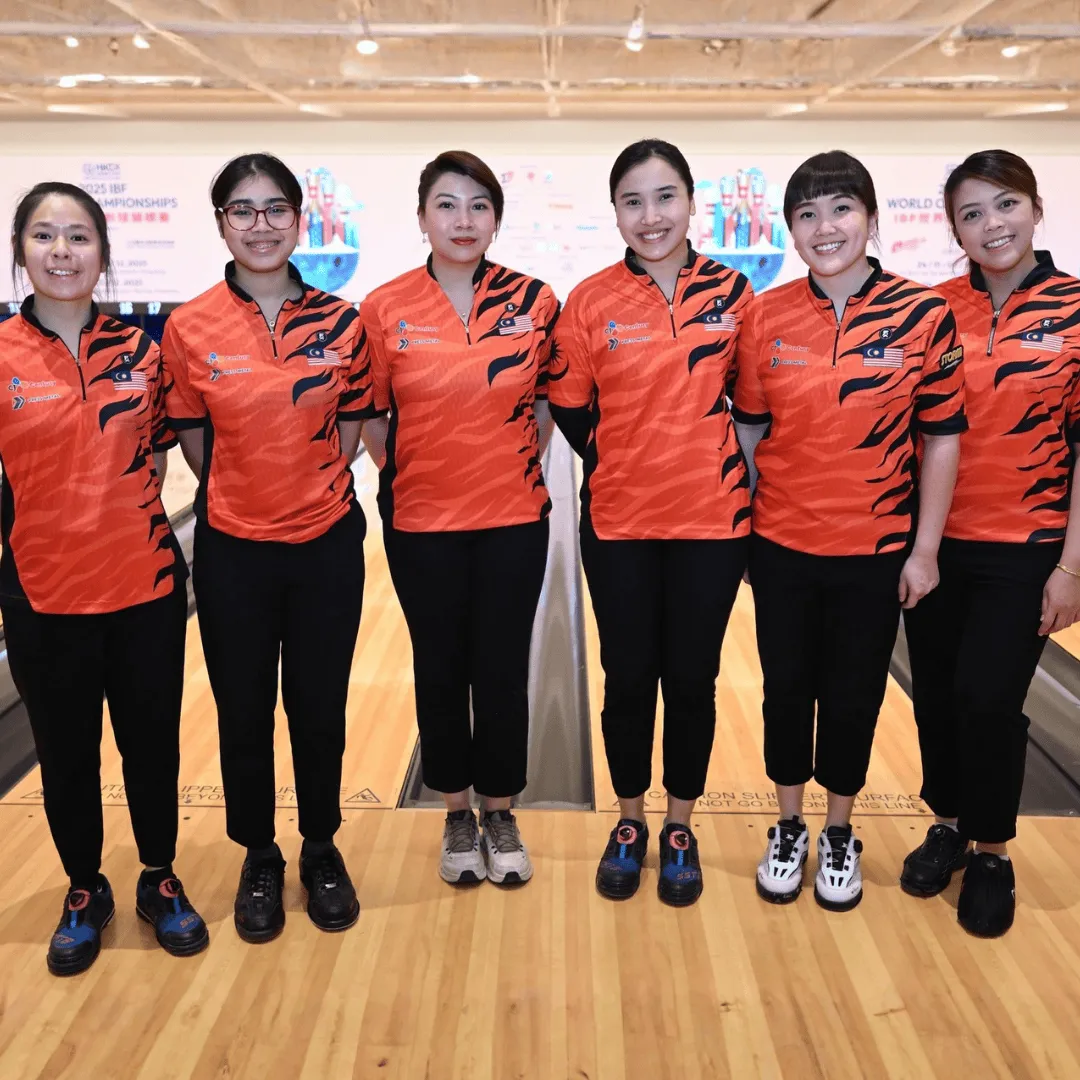
Roll-Offs Decide Team Finalists at the IBF World Championships 2025
The team event at the IBF World Championships 2025 reached a decisive pointtoday in Hong Kong, as both the women’s and men’s divisions completedqualifying and then seven-game Round 2 match-play stage to determine the fourteams advancing to the semifinals at the Queen Elizabeth Stadium. Women's Division The women’s event began with Singapore leading qualifying after seven gameswith 1,457 total over 7 games, followed by the United States (1,455), Korea(1,425), Sweden (1,391), Malaysia (1,384), Japan (1,360), Macao (1,344), andTaiwan (1,338) completing the top eight to reach Round 2. Match play brought a complete reset. Malaysia produced the strongest overall performance in Round 2, finishingfirst with 5 wins, 2 losses and 15 points, followed by Korea, the UnitedStates, Japan and Singapore all finishing with 12 points to force a four-wayroll-off. In the roll-off, Korea posted 215, the United States followed with 200, andJapan delivered 197, securing all three advancing spots. Singapore, eventhough led the Round 1 of qualification, recorded 157 and was eliminated fromthe medal race. In the semifinals, Malaysia will play against Japan, while the United Stateswill face Korea for a spot in the title match. Men's Division The men’s opening qualifying round was topped by Finland with 1,581, followedby Sweden (1,565), Korea (1,555), Germany (1,526), France (1,521), Macao(1,500), Denmark (1,497), and Saudi Arabia (1,497) to complete the advancinggroup. In Round 2, Germany moved into the top position with 5 match-play wins and 15points. Sweden, Korea, France, and Macao finished behind them with 12 points(4W-3L record), so the final three semifinal spots came down to a four-teamtie, requiring a one-game roll-off. In the roll-off, Sweden fired 257, Korea 242, and France rolled 205 to earntheir berths in the semifinals. Macao’s 194 was not enough to advance. In the Men's Team semifinals, Germany will face France, and Sweden will standagaist Korea. All remaining Team of Five squads and Trios will head to Queen ElizabethStadium in Wan Chai for the arena rounds. Thursday brings the Women’s andMen’s Trios semifinals and finals, and on Friday the Team of Five medalmatches will close the event as the 2025 world champions are crowned. Finlaswill be played in a best of three format. A full schedule and all results from the IBF World Championships 2025 areavailable attournaments.bowlinglife.eu. tournaments.bowlinglife.eu Thursday, December 4 – Queen Elizabeth Stadium, Wanchai Friday, December 5 – Queen Elizabeth Stadium, Wanchai
International
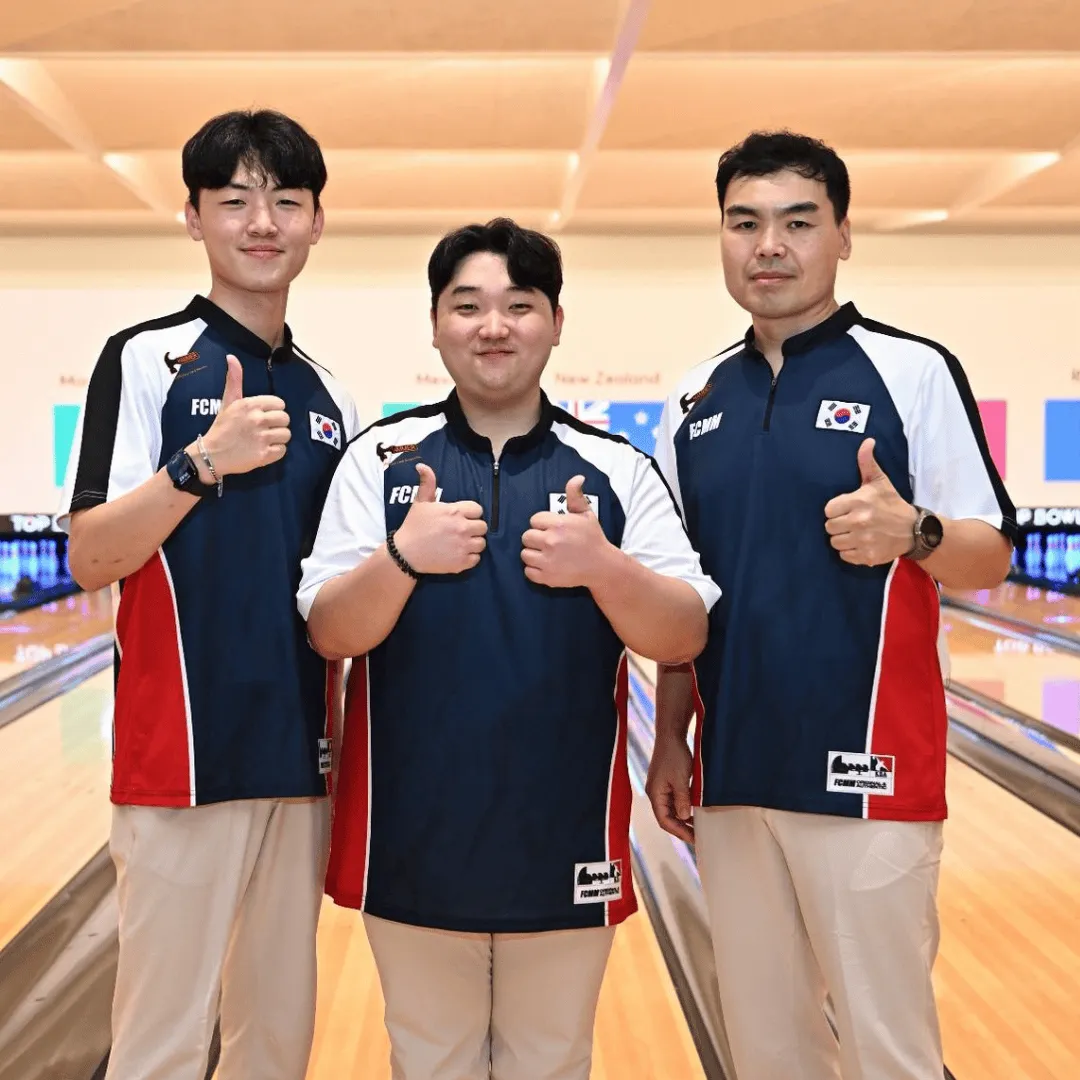
Men’s Trios Semifinalists Set at the IBF World Championships 2025
Today, the IBF World Championships 2025 in Hong Kong continued with a men'strios event and it delivered one of the most dramatic qualification of theevent so far. A total of 56 trios completed seven games across two squads to determine which16 teams would advance to Round 2, and the battle around the cut line camedown to a single pin, with both Macau and Hong Kong narrowly missing out. Korea’s Trio set the tone early and never let go of the lead. Ji Geun, Kim JunYung and Baek Seung Min produced a strong, consistent block for a leadingtotal of 1647. Finland’s Trio - Tomas Käyhkö, Luukas Väänänen and Niko Oksanen - followed insecond with 1627 after a solid showing in Squad 2. Denmark's Dan A.Østergaard, Niclas Sørensen and Nicolas Carter secured third place with 1564,followed closely by another Denmark's Trio Carsten W. Hansen, MathiasAnkderdal and Tim Stampe and USA Trio Patrick Hanrahan, Andrew Anderson andRyan Barnes with identical 1556 totals. At the edge of the field, Sweden’s James Blomgren, Joachim Karlsson and PontusAndersson claimed the final advancing position in 16th place with 1473,leaving Macau and Hong Kong just one pin behind on 1472. Drama in Round 2 Match Play Round 2 placed the top 16 trios into two groups of eight, with sevenround-robin games and match-play points determining which teams would reachthe semi-finals. Group A saw Korea’s Ji Geun, Kim Jun Yung and Baek Seung Min continue their dominant runas they finished first with 5 wins and 1 draw over 7 games to earn 16 points. Round 2 placed the top 16 trios into two groups of eight, with sevenround-robin games and match-play points determining which teams would reachthe semi-finals. Group A saw Korea’s continue their dominant runas they finished first with 5 wins and 1 draw over 7 games to earn 16 points. The second place for the semifinals came onlyafter a dramatic three-way roll-off between Sweden, Malaysia and France. France’s trio produced one of the biggeststorylines of the day by shooting a perfect 300 game and opening their blockwith four straight wins, but three consecutive losses pulled them into theroll-off. Despite their strong start, they were unable to recover, and theirroll-off score was not enough to keep their championship hopes alive. Sweden posted 243 in the roll-off to advance, while Malaysia followed with 209 and France with 168. Group B produced a second roll-off, this time against Australia, Denmark andFinland. Australia’s trio of Julian Dinham, Luke Doyle and Blake Walshdelivered a 227 to earn their place in the semi-finals, while Denmark's Dan A. Østergaard, Niclas Sørensen and Nicolas Carter advancedwith a 212. Finland’s 175 placed them third in the roll-off and outside theadvancing positions. In the semifinals Korea will face Sweden, meanwhile Denmark will stand against Australia. The Men’s Trios Semi-finals and Finals will be held on Thursday at QueenElizabeth Stadium in WanChai, alongside the Team of Five rounds that willcontinue on Friday. With the men’s field now finalized, attention turns totomorrow’s Women’s Trios qualification, where another competitive lineup willtake the lanes in Hong Kong. A full schedule and all results from the IBF World Championships 2025 areavailable attournaments.bowlinglife.eu. tournaments.bowlinglife.eu Tuesday, December 2 Wednesday, December 3 Thursday, December 4 – Queen Elizabeth Stadium, Wanchai Friday, December 5 – Queen Elizabeth Stadium, Wanchai
International

Romania and Finland Win Doubles Gold at IBF World Championships 2025
The Doubles events at the IBF World Championships 2025 delivered anotherdramatic day in Hong Kong, highlighted by Romania’s historic triumph in themen’s division and Finland’s continued dominance in the women’s field. Romania’s Mihai-Alin Dragnia and Mate Balazs-Becsi captured a landmark goldmedal in Men’s Doubles, while Finland’s Essi Pakarinen and Peppi Konsterisecured Women’s Doubles gold — marking Finland’s third gold medal of thechampionships and their fourth medal overall. Women's Division Essi Pakarinen and Peppi Konsteri claimed the gold medal after a confident 2–0(181-177, 230-213) win over Singapore’s Cherie Tan and Daphne Tan in thefinal. The Finnish pair advanced from the semifinals with a 2–0 (230-203, 206-201)win over Singapore’s Shayna Ng and New Hui Fen, while the Tan sisters reachedthe final by defeating USA’s Jillian Martin and Julia Bond 2–1 (188-158,188-220, 160-256). The victory marks Essi Pakarinen’s second gold medal of the championships,following her triumph in Women’s Singles.Women’s Doubles – MedalistsGold – Essi Pakarinen & Peppi Konsteri (Finland)Silver – Cherie Tan & Daphne Tan (Singapore)Bronze – Jillian Martin & Julia Bond (USA), Shayna Ng & New Hui Fen(Singapore) Women’s Doubles – Medalists Men's Division In the men’s event, Romania wrote a new chapter in its bowling history. Mihai-Alin Dragnia and Mate Balazs-Becsi captured the nation’s first-everWorld Championships gold in a flawless finals performance, defeating Germany’sPaul Purps and Dennis Gruenheid 2–0 (238-233, 215-179). The Romanian pair showed composure andconsistency throughout the day, first overcoming Malaysia’s Muhammad SyazirolShamsudin and Rafiq Ismail in a tense 2–1 (235-247, 235-221, 231-166) semifinal. Germany reached the gold-medal match after a strong semifinal win over theCzech Republic’s Ondrej Trojek and Lukas Jelinek, earning a straight-games 2–0 (206-170, 3-219) victory. The Czechs and Malaysia's duo both secured bronze. Men’s Doubles – MedalistsGold – Mihai-Alin Dragnia & Mate Balazs-Becsi (Romania)Silver – Paul Purps & Dennis Gruenheid (Germany)Bronze – Ondrej Trojek & Lukas Jelinek (Czech Republic), Muhammad SyazirolShamsudin & Rafiq Ismail (Malaysia) Men’s Doubles – Medalists The IBF World Championships 2025 continue tomorrow with the start of the Triosqualification. Full results, live scores, and schedules are available attournaments.bowlinglife.eu. tournaments.bowlinglife.eu Official Schedule – IBF World Championships 2025 Monday, December 1 Tuesday, December 2 Wednesday, December 3 Thursday, December 4 – Queen Elizabeth Stadium, Wanchai Friday, December 5 – Queen Elizabeth Stadium, Wanchai
International

IBF World Championships: 24 Teams Advance in Men’s Doubles
The Men’s Doubles event at the IBF World Championships 2025 completed itsfirst stage today in Hong Kong, with the top 24 teams advancing to Round 2after seven Baker-format games at Top Bowl in Kai Tak Sports Park. Malaysia’s Muhammad Danial Abu Samah and Mohammad Hafiz Zainuddin dominatedthe qualifying with 1699, averaging 242.71. Romania’s Mihai-Alin Dragnia and Mate Balazs-Becsi followed in second placewith 1660, while Australia’s Julian Dinham and Luke Doyle finished third with1651. Dinham and Doyle delivered one of the biggest stories of the day. Australia'sduet scored games 299 and 300 - securing their place comfortably inside thetop 24. France’s Maxime Dubois and Gaëtan Mouveroux placed fourth on 1649, just aheadof Finland’s Tomas Käyhkö and Niko Oksanen, who closed the top 5 with 1635. The cut for Round 2 stood at 1512, claimed by Germany’s Dennis Gruneheid andPaul Purps. 32 Players Split Into Four Groups Group A (Places 1, 8, 9, 16, 17, 24) MAS – Muhammad Danial Abu Samah / Mohammad Hafiz ZainuddinFIN – Niko Oksanen / Tim StampeFIN – Joonas Jähi / Luukas VäänänenKOR – Baek Seung Min / Ji GeunCAN – François Lavoie / Mitch HupeGER – Dennis Gruneheid / Paul Purps MAS – Muhammad Danial Abu Samah / Mohammad Hafiz Zainuddin FIN – Niko Oksanen / Tim Stampe FIN – Joonas Jähi / Luukas Väänänen KOR – Baek Seung Min / Ji Geun CAN – François Lavoie / Mitch Hupe GER – Dennis Gruneheid / Paul Purps Group B (Places 2, 7, 10, 15, 18, 23) ROU – Mihai-Alin Dragnia / Mate Balazs-BecsiDEN – Mathias Ankerdal / Niclas SørensenSWE – Pontus Andersson / Joachim KarlssonPHI – Marc Dylan Custodio / Artegal BarrientosHKG – Ma Ka Yin, Jovi / Tse Chun Hin, IvanMEX – Jesús Alberto Lecona Escartín / Dante Romero Nava ROU – Mihai-Alin Dragnia / Mate Balazs-Becsi DEN – Mathias Ankerdal / Niclas Sørensen SWE – Pontus Andersson / Joachim Karlsson PHI – Marc Dylan Custodio / Artegal Barrientos HKG – Ma Ka Yin, Jovi / Tse Chun Hin, Ivan MEX – Jesús Alberto Lecona Escartín / Dante Romero Nava Group C (Places 3, 6, 11, 14, 19, 22) AUS – Julian Dinham / Luke DoyleDEN – Carsten W. Hansen / Tim StampeMAS – Rafiq Ismail / Muhammad Syazirol ShamsudinCHN – Zhang Min / Du Jian ChaoSWE – Jesper Svensson / James BlomgrenUAE – Nayef Eqab Al Obeidli / Mohamed Ismail Al Zarooni AUS – Julian Dinham / Luke Doyle DEN – Carsten W. Hansen / Tim Stampe MAS – Rafiq Ismail / Muhammad Syazirol Shamsudin CHN – Zhang Min / Du Jian Chao SWE – Jesper Svensson / James Blomgren UAE – Nayef Eqab Al Obeidli / Mohamed Ismail Al Zarooni Group D (Places 4, 5, 12, 13, 20, 21) FRA – Maxime Dubois / Gaëtan MouverouxFIN – Tomas Käyhkö / Niko OksanenCZE – Ondrej Trojek / Lukas JelinekITA – Alessandro Walter Santu / Marco Cesare ParapiniSWE – Markus Jannson / Robin IlhammarFRA – Mike Bartaire / VAlentin Saulnier FRA – Maxime Dubois / Gaëtan Mouveroux FIN – Tomas Käyhkö / Niko Oksanen CZE – Ondrej Trojek / Lukas Jelinek ITA – Alessandro Walter Santu / Marco Cesare Parapini SWE – Markus Jannson / Robin Ilhammar FRA – Mike Bartaire / VAlentin Saulnier Schedule Ahead Men’s Doubles Round 2 takes place on Sunday morning, followed by Women’s Doubles Round 2. In the afternoon, both men’s and women’s doubles semifinals and finals will be played in best-of-three matches. Trios and Team of Five events will follow in early December, with the finalstages held at Queen Elizabeth Stadium in Wanchai. A full schedule and all results from the IBF World Championships 2025 areavailable attournaments.bowlinglife.eu. tournaments.bowlinglife.eu Sunday, November 30 Monday, December 1 Tuesday, December 2 Wednesday, December 3 Thursday, December 4 – Queen Elizabeth Stadium, Wanchai Friday, December 5 – Queen Elizabeth Stadium, Wanchai
International

Women’s Doubles Field Cut to 24 at the IBF World Championships 2025
The Women’s Doubles event at the IBF World Championships 2025 in Hong Kongcompleted its first stage today, with 24 teams advancing to Round 2 afterseven Baker-format games at Top Bowl in Kai Tak Sports Park. Singapore's Shayna Ng and New Hui Fen topped the qualifying with a strongtotal of 1493, averaging 213.29. They were followed closely by Japan’s ShionIzumune and Kiri Watanabe, who posted 1489. Korea’s Kim Bo Ah and Shin Hye Binplaced third with 1483. Denmark's sisters Sofie and Karen Kærgaard Nielsen scored 1478 to finishfourth, while Singapore's Cherie and Daphne Tan scored 1474 to round out thetop five. Finland, USA and Singapore have all three of their doubles inside the cut. Thecut for Round 2 fell at 1349, taken by Finland’s Tiiamari Laukkanen and JenniHeino. 32 Players Split Into Four Groups Group A (Places 1, 8, 9, 16, 17, 24) SGP – Shayna Ng / New Hui FenKOR – Song Si Ra / Paek Ye DamSWE – Hanna Engberg / Nora JohanssonFIN – Eliisa Hiltunen / Ani JuntunenCAN – Felicia Wong / Jennifer BesanaFIN – Tiiamari Laukkanen / Jenni Heino SGP – Shayna Ng / New Hui Fen KOR – Song Si Ra / Paek Ye Dam SWE – Hanna Engberg / Nora Johansson FIN – Eliisa Hiltunen / Ani Juntunen CAN – Felicia Wong / Jennifer Besana FIN – Tiiamari Laukkanen / Jenni Heino Group B (Places 2, 7, 10, 15, 18, 23) JPN – Shion Izumune / Kiri WatanabeMAC – Hui Tong / Veronica Dias de SouzaUSA – Bryanna Coté / Shannon PluhowskyFIN – Essi Pakarinen / Peppi KonsteriSWE – Anna Andersson / Victoria JohanssonMAS – Gillian Lim / Nora Lyana Norkamal JPN – Shion Izumune / Kiri Watanabe MAC – Hui Tong / Veronica Dias de Souza USA – Bryanna Coté / Shannon Pluhowsky FIN – Essi Pakarinen / Peppi Konsteri SWE – Anna Andersson / Victoria Johansson MAS – Gillian Lim / Nora Lyana Norkamal Group C (Places 3, 6, 11, 14, 19, 22) KOR – Kim Bo Ah / Shin Hye BinTPE – Wang Ya Ting / Teng Jo YuUSA – Lauren Russo / Breanna ClemmerUSA – Jillian Martin / Julia BondMAC – So Cheng Lam / Wong Son IanAUS – Rebekah Martin / Bec Whiting KOR – Kim Bo Ah / Shin Hye Bin TPE – Wang Ya Ting / Teng Jo Yu USA – Lauren Russo / Breanna Clemmer USA – Jillian Martin / Julia Bond MAC – So Cheng Lam / Wong Son Ian AUS – Rebekah Martin / Bec Whiting Group D (Places 4, 5, 12, 13, 20, 21) DEN – Sofie K. Nielsen / Karen K. NielsenSGP – Cherie Tan / Daphne TanMEX – Iliana Lomelí Lemus / Lilia M. Robles GonzálezSGP – Tay Ning / Bernice LimDEN – Maria Bak Gerding / Cecilie DamMAS – Adelia Nur / Siti Safiyah DEN – Sofie K. Nielsen / Karen K. Nielsen SGP – Cherie Tan / Daphne Tan MEX – Iliana Lomelí Lemus / Lilia M. Robles González SGP – Tay Ning / Bernice Lim DEN – Maria Bak Gerding / Cecilie Dam MAS – Adelia Nur / Siti Safiyah Schedule Ahead Next up is the Men’s Doubles qualification, which continues on Saturday with three seven-game squads at Top Bowl. On Sunday, the Women’s Doubles Round 2 round-robin will open the day, followed by Men’s Doubles Round 2. Later in the afternoon, both men’s and women’s doubles semifinals and finals will be contested in best-of-three matches. Trios and Team of Five events will follow in early December, with the finalstages held at Queen Elizabeth Stadium in Wanchai. A full schedule and all results from the IBF World Championships 2025 areavailable attournaments.bowlinglife.eu. tournaments.bowlinglife.eu Saturday, November 29 Sunday, November 30 Monday, December 1 Tuesday, December 2 Wednesday, December 3 Thursday, December 4 – Queen Elizabeth Stadium, Wanchai Friday, December 5 – Queen Elizabeth Stadium, Wanchai
International
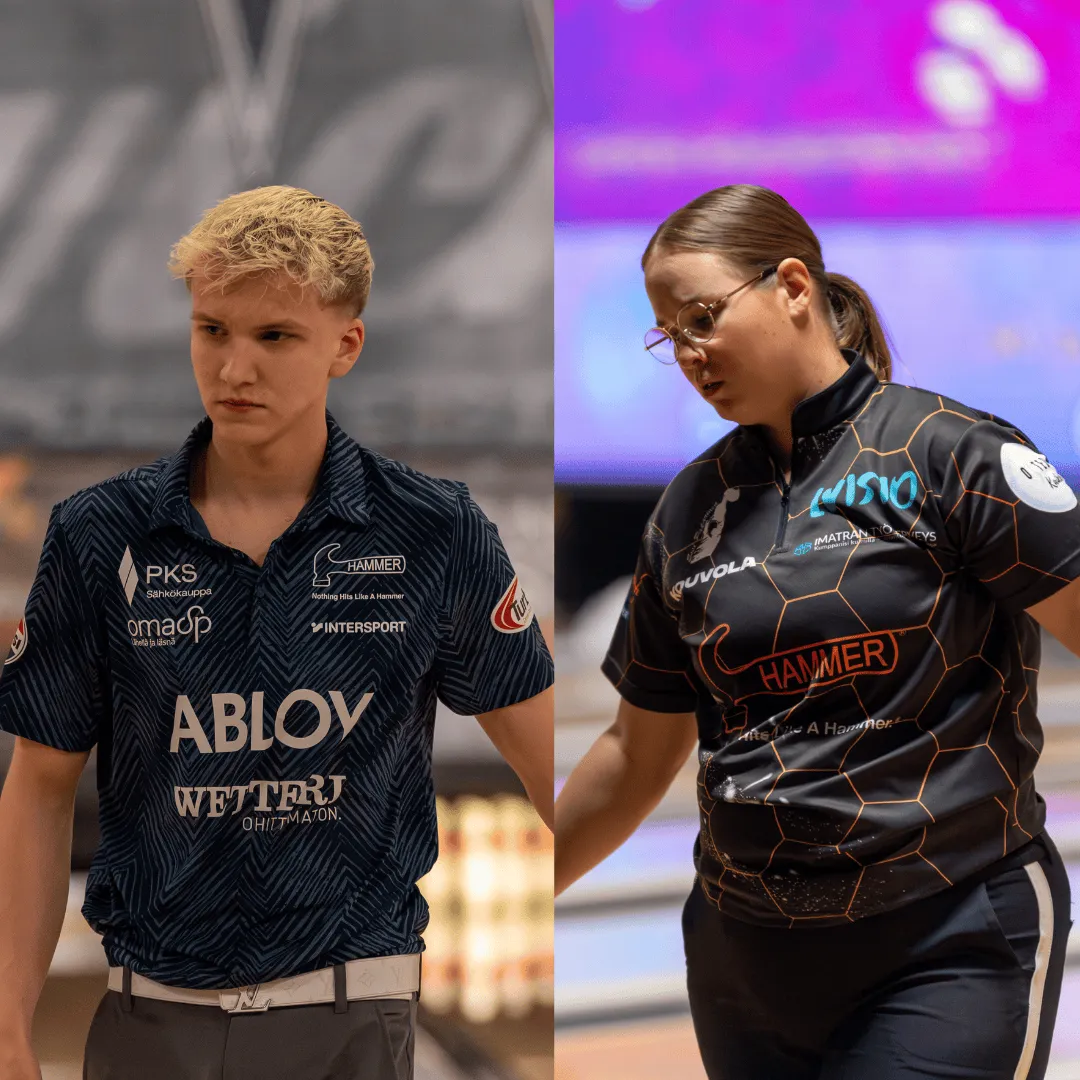
Finland Sweeps IBF World Championships Singles Gold in Hong Kong
The Singles events at the IBF World Championships 2025 came to a close todayin Hong Kong, and Finland delivered one of the strongest performances inchampionship history. Both gold medals went to Finnish athletes, with Luukas Väänänen winning themen’s title and Essi Pakarinen capturing the women’s gold. In the women’s division, Finland’s Essi Pakarinen secured the gold medal withtwo decisive games in the final against Malaysia’s Adelia Nur Irwan Syazalee. Pakarinen posted games of 217-191 and 214-169, completing a clean 2–0 victory.Nur earned the silver after reaching the final with a 2–1 semifinal win overSingapore’s Shayna Ng Lin Zhi. The bronze medals went to Ng and Team USA’sBreanna Clemmer, who fell 2–1 to Pakarinen in the semifinals but producedhighest game in the semifinals with a 266 in Match 2. After securing the women’s singles gold, Essi Pakarinen shared her reactionwith BowlingLife. She reflected on the years of work behind this moment andthe mental approach that carried her through the final rounds. "It is unbelievable. I have worked so hard for this for a few years. And now Ihave the gold in my hands. I think the biggest key to this gold medal wasminding my own game and focusing all my energy on shooting a good shot one ata time." Despite Finland’s strong results today, celebrations will have to wait, as theteam now turns its attention to the upcoming events. "Of course our team had a huge day today but tomorrow is a new day and we needto focus on the future. Maybe some celebrations when I get back to Finland butnow all focus on what is ahead." Men's Division The men’s final became an all-Finnish matchup between Tomas Käyhkö and LuukasVäänänen. Käyhkö opened the match strongly with 247-227 win, but Väänänenresponded under pressure with a brilliant performance in the last two games,posting 258-242 and 246-236 to seal a 2–1 victory and claim the gold. Käyhkö and Väänänen had each advanced through competitive semifinals, withVäänänen defeating Ryan Barnes of the United States and Käyhkö overcomingSweden’s Markus Jansson. Barnes and Jansson earned the bronze medals. After winning the men’s singles gold, Luukas Väänänen also spoke with BowlingLife, describing the breakthrough moment he had been chasing for years. He highlighted how his mental game and calm approach allowed him to stay in control during the final against Ryan Barnes and Tomas Käyhkö. "It feels unbelievable, but soo good. I’ve been close to get that big win with many podium places in big tournament and now I get it. I’m just so happy about my performance on the lanes. Mental game and all was perfect. I didn’t take any extra pressure to play against Ryan and Tomas. Just focused making one good shots and it worked pretty well." Väänänen also reflected on Finland’s strong start to the championships and expressed confidence in what the team can still achieve. "3 medals with 2 gold and 1 silver is grazy start for the championships. We have really strong team in mens and womens, I think we will take more than those 3 medals back to he." The IBF World Championships 2025 continue tomorrow with the start of theDoubles medal rounds. Full results, live scores, and schedules are availableattournaments.bowlinglife.eu. tournaments.bowlinglife.eu Official Schedule – IBF World Championships 2025 Friday, November 28 Saturday, November 29 Sunday, November 30 Monday, December 1 Tuesday, December 2 Wednesday, December 3 Thursday, December 4 – Queen Elizabeth Stadium, Wanchai Friday, December 5 – Queen Elizabeth Stadium, Wanchai
International
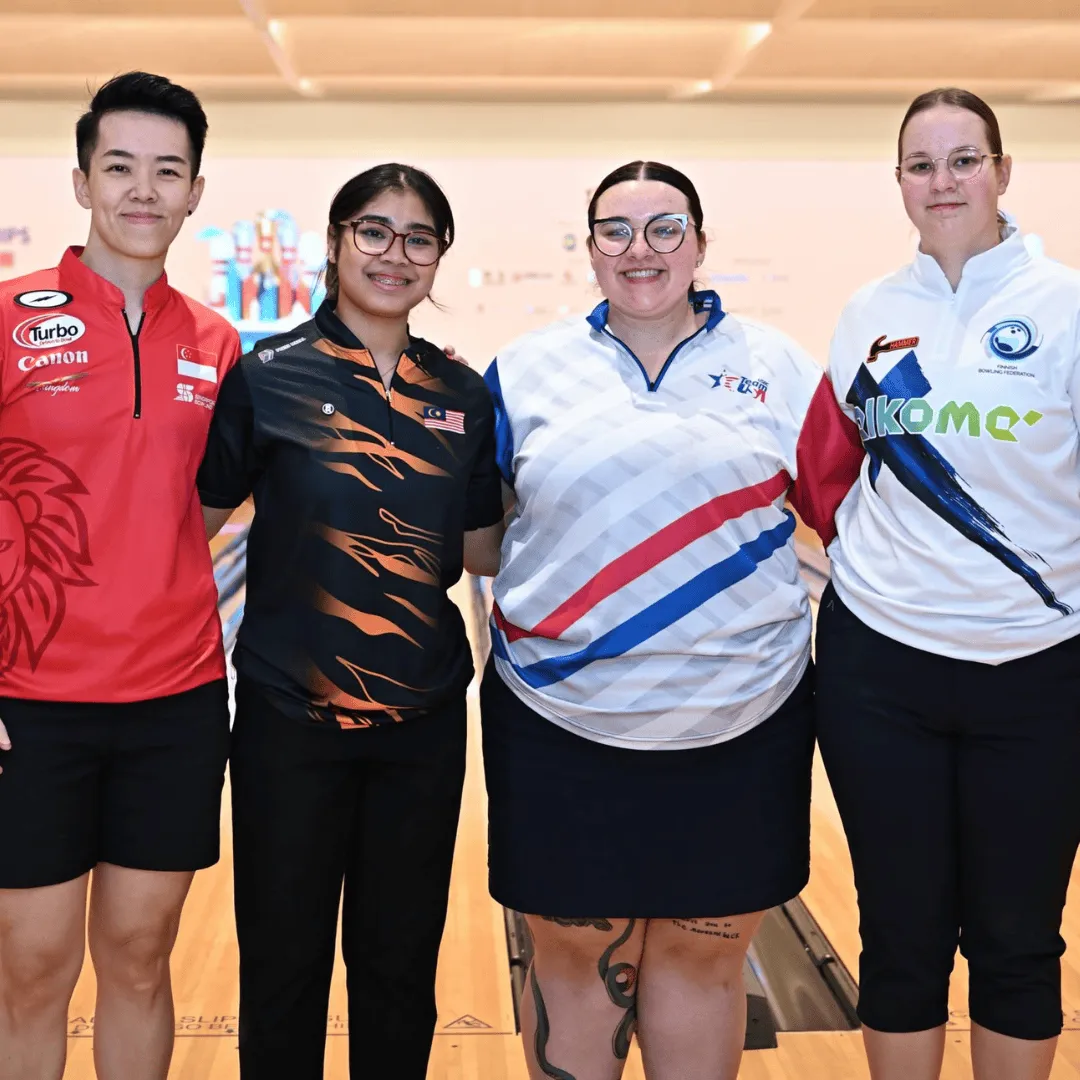
Women’s Singles Semifinal Lineup Set at IBF World Championships 2025
The Women’s Singles Round 2 concluded today in Hong Kong with a tightlycontested set of group battles, and four athletes have secured their places inthe semi-finals. Singapore, Finland, Malaysia and the United States will allbe represented in the medal round. In Group A, Singapore’s Shayna Ng delivered a composed and consistentperformance, finishing with 1517 pinfall and 16 points. A strong final stretchallowed her to stay ahead of Korea’s Shin Hye Bin, who posted 1441 for secondplace, while Finland’s Peppi Konsteri finished third with 1507. Denmark’sKaren Kærgaard Nielsen, who led yesterday's qualifying, placed fourth with1436. Group B went to Finland’s Essi Pakarinen, who impressed with 1539 total and 15points. Malaysia’s Natasha Roslan pushed her throughout the block and endedclose behind on 1467, followed by Taiwan’s Teng Jo Yu with 1515. Group C belonged to Malaysia's Adelia Nur, who claimed spot in the semis with1484 and 15 points. Korea’s Kim Bo Ah finished second on 1431, and Australia’sBec Whiting placed third with 1384. In Group D, Breanna Clemmer of the United States dominated early and protectedher lead through Game 7. She closed with 1534 and 18 points. Her teammateShannon Pluhowsky finished second on 1564 pinfall but with fewer points, whileTaiwan’s Wang Ya Ting and Canada’s Felicia Wong stayed close behind in abalanced group. Semifinals will feature Breanna Clemmer of the United States facing Finland’sEssi Pakarinen, while the second match sets Singapore’s Shayna Ng Lin Zhiagainst Malaysia’s Adelia Nur Irwan Syazalee. Official Schedule – IBF World Championships 2025 Thursday, November 27 Friday, November 28 Saturday, November 29 Sunday, November 30 Monday, December 1 Tuesday, December 2 Wednesday, December 3 Thursday, December 4 – Queen Elizabeth Stadium, Wanchai Friday, December 5 – Queen Elizabeth Stadium, Wanchai
International